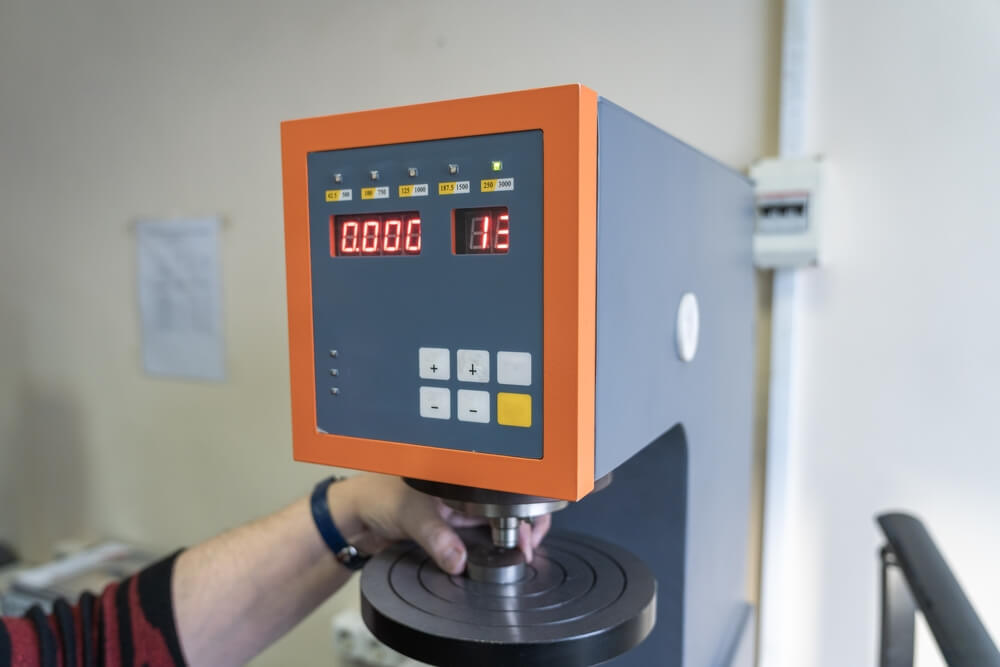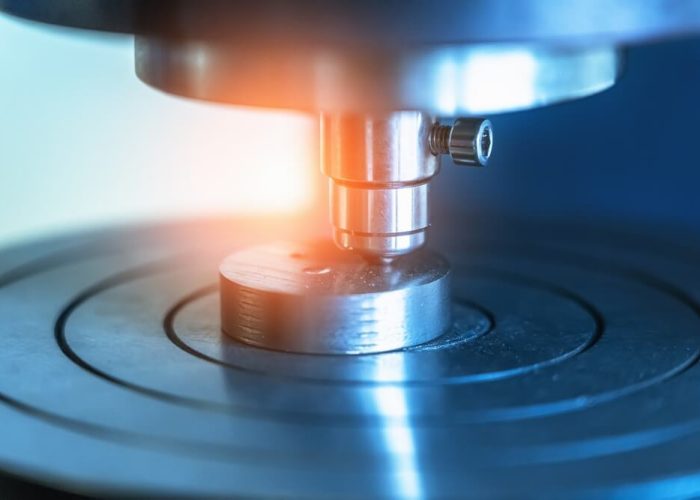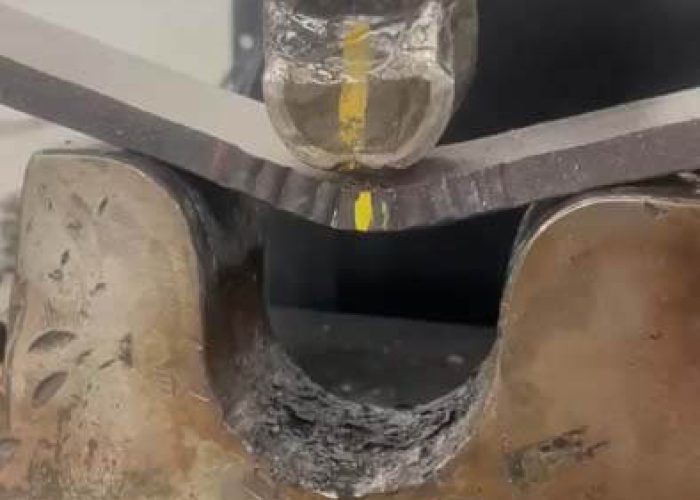Metallurgical Testing for Material Integrity
Metallurgical testing plays a crucial role in ensuring the quality, safety, and reliability of metal components used in various industrial applications. It helps in identifying material properties, detecting defects, assessing structural integrity, and determining the suitability of materials for specific uses.

What Is Metallurgical Testing?
Metallurgical testing is akin to conducting a comprehensive health check-up for metal materials. It involves examining the details that constitute the metal – its physical, chemical, and mechanical properties – to gauge its performance. Think of it as peeking under the hood of a car to understand how everything works.
Let’s consider a real-world example – ensuring the structural integrity of a bridge. Metallurgical testing provides the assurance that the metal used in the bridge can withstand heavy loads, extreme weather conditions, and any other factors that might impact its performance.
By scrutinizing the behavior of metallic materials under varying conditions, we gain insights into their durability, flexibility, and resilience. This process also helps in detecting potential contaminants or impurities that could compromise the material’s integrity and lead to subpar performance.
To put it simply, metallurgical testing offers crucial details about the structure and composition of metallic materials, allowing us to identify potential weaknesses before they manifest into issues. This level of scrutiny plays a pivotal role in ensuring the safety and dependability of metal-based products across diverse industries.
Diverse Metallurgical Testing Methods
In the realm of metallurgical testing, various methods are employed to comprehensively evaluate metallic materials. Throughout my years in the field, I’ve gained firsthand knowledge about the significance of these testing methods in ensuring the structural integrity of materials.
Chemical Analysis
Chemical analysis is a fundamental aspect of metallurgical testing, allowing us to delve into the elemental composition of metals. By identifying the elements present and quantifying their concentrations, we can ascertain whether a material aligns with specified standards. This method is pivotal in guaranteeing material conformity and adherence to stringent quality requirements set forth by industry standards and regulatory bodies. These findings are crucial for ascertaining material purity, detecting impurities, and preventing potential corrosion or material failure.
Microscopic Examination
Microscopic examination plays a pivotal role in metallurgical analysis, providing immense insight into crucial characteristics such as grain structure, phase composition, and potential defects within the material. By observing these minute details, we can assess the material’s strength, durability, and overall performance under varying conditions. This method allows us to identify any structural irregularities or defects that may compromise the material’s integrity, helping us make informed decisions regarding its suitability for specific applications.
Mechanical Testing
Mechanical testing encompasses a suite of evaluations to measure a material’s mechanical properties, offering valuable data for engineers and manufacturers when selecting materials for specific applications and predicting their performance in different environments. By subjecting materials to mechanical tests, we can anticipate their behavior under stress and strain, providing crucial insights into their structural reliability and performance capabilities.
Each of these testing methods plays a pivotal role in elucidating the multifaceted nature of metallic materials. From assessing elemental composition to scrutinizing microscopic structures and measuring mechanical properties, thorough metallurgical testing ensures that materials meet rigorous standards for integrity and performance.
We employ these diverse testing methods to gain a comprehensive understanding of metallic materials’ behavior under various conditions throughout their lifecycle—helping us offer accurate insight and guidance to industries reliant on these critical materials.
Unpacking these testing methods underscores the meticulous approach required in evaluating material integrity. The combination of chemical analysis, microscopic examination, and mechanical testing offers a holistic perspective on the quality and performance attributes of metallic materials.
Significance of Metallurgical Testing
Metallurgical testing might sound complex and technical, but its significance cannot be overstated. For one, it plays a crucial role in ensuring that the metal products we use are of the highest quality. This is where the first important aspect comes in: Quality Assurance.
Quality Assurance
Our businesses and, most importantly, our customers rely on us to deliver high-quality metal products that meet rigorous standards and specifications. Metallurgical testing is an essential part of this process as it allows us to verify the integrity, strength, and composition of the materials we use. By conducting thorough metallurgical tests, we can be confident that our manufactured metal products are up to par and less likely to fail during use.
Moreover, by seeking out any deviations from required standards or specifications early in the production process, we can take corrective action and prevent defects from reaching the end consumer. This not only protects our reputation but also boosts customer confidence and safety, emphasizing the critical role that quality assurance through metallurgical testing plays in our operations.
Failure Analysis
We know that unexpected material or component failures can have serious consequences for both manufacturers and end-users. Whether it’s a structural failure in a building or a breakdown in industrial machinery, identifying and understanding the root causes of these failures is paramount. This is precisely where metallurgical testing steps in with another vital aspect: Failure Analysis.
By examining failed metal components under a microscope and subjecting them to various analytical techniques, such as microscopy and spectroscopy, we can uncover the reasons behind their untimely demise. This enables us to take corrective actions to rectify the issues and implement preventive measures to avoid similar failures in the future.
Understanding failure mechanisms and modes becomes invaluable knowledge that can inform design improvements, material selection, manufacturing processes, and maintenance strategies. It’s essentially about learning from past mistakes to propel ourselves towards a future where component failures are minimized.
In summary, metallurgical testing isn’t just about examining metals under microscopes; it’s about ensuring the quality, reliability, and safety of the products we offer. Through quality assurance and failure analysis, we not only maintain our high standards but also continuously improve our processes based on actionable insights gained from extensive testing methods.
Detailed Metallurgical Testing Procedure
Metallurgical testing is a critical process that demands precision and attention to detail. From sampling to testing and analysis, each step plays a vital role in evaluating the material’s integrity and characteristics.
The first step in this meticulous process is sampling. This involves collecting representative samples from the material to be tested. The key here is to ensure that the samples are free from surface contamination or damage that could skew the test results. Picture it like gathering ingredients for a recipe – you need to ensure that each component is pure and unadulterated to get an accurate final product.
Next, we move on to sample preparation. Once we have our samples, attention turns to preparing them for testing. This stage may involve cutting, mounting, polishing, and etching to reveal microstructural features. Think of this step as prepping a canvas for a masterpiece – each stroke needs to be calculated and precise to bring out the true essence of the material under observation.
With our samples prepared, it’s time for testing and analysis. This phase encompasses conducting chosen testing methods such as chemical analysis, microscopy, and mechanical testing. It’s like solving a puzzle – each piece of data gathered through these methods contributes to the larger picture of understanding the material’s properties and characteristics.
Microscopy
Microscopy allows us to observe the microstructure of the material at different levels of magnification. By doing so, we can gain insights into grain size, phase distribution, and any defects present within the material.
Chemical Analysis
Chemical analysis provides crucial information about the material’s composition, ensuring that it aligns with specified standards and requirements. This analytical technique helps unveil any impurities or alloying elements present in the material.
Mechanical Testing
Mechanical testing encompasses various tests such as tensile testing, hardness testing, impact testing, and more. These tests gauge the material’s mechanical properties like strength, ductility, toughness, and resilience.
The detailed metallurgical testing procedure involves a series of intricate steps that work cohesively to uncover the intrinsic nature of materials. Each stage contributes significantly to our understanding of a material’s properties and characteristics, ultimately ensuring its integrity and reliability in various applications.
In highlighting the intricate nature of metallurgical testing, it becomes paramount to underscore its consequential benefits across various industries.
Deriving Benefits from Metallurgical Testing
When it comes to understanding the underlying benefits of metallurgical testing, the advantages are far-reaching and significantly impactful. One of the foremost advantages lies in enhanced product quality. Metallurgical testing plays a crucial role in identifying and rectifying material flaws, leading to improved quality and reliability of metal-based products. This is particularly essential in industries where safety and durability are paramount, such as aerospace, automotive, construction, and manufacturing. By ensuring that the materials used are structurally sound and free from defects, companies can deliver products that meet the highest standards and uphold their reputation for excellence.
Moreover, another substantial benefit that arises from metallurgical testing is cost savings. By conducting comprehensive testing, potential issues and weaknesses in materials can be identified early on, preventing costly failures, downtimes, and rework in industrial processes. This proactive approach not only saves valuable resources but also leads to significant savings in terms of operational expenses and materials management.
Furthermore, a lesser-known but equally important benefit is the assurance provided by metallurgical testing. This assurance extends beyond quality and cost-saving aspects and encompasses customer confidence, compliance with regulations, and risk mitigation. Ensuring that all metal-based products meet stringent quality criteria instills confidence in customers, thereby enhancing brand reputation and loyalty.
It’s worth noting that the benefits are not isolated to just the company undertaking the metallurgical testing. They have far-reaching implications for the industry at large. The implementation of rigorous testing standards raises the bar across the board, setting a precedent for improved product quality and safety throughout the industry.
In essence, metallurgical testing isn’t solely about analyzing materials; it’s an indispensable tool for enhancing product quality, promoting cost efficiency, ensuring regulatory compliance, and upholding industry-wide standards of excellence.
Qualifying Metals for Distinct Applications
When it comes to aerospace applications, metals must undergo stringent testing to validate properties such as tensile strength, yield strength, elongation, heat resistance, and corrosion resistance. These are crucial measures to ensure that materials can withstand high-stress conditions and extreme environmental factors without compromising safety, which is paramount in this industry.
In the automotive sector, metals used in critical components like engine parts and safety features are subject to rigorous testing. The ability of a metal to withstand impact and fatigue plays a pivotal role in ensuring the safety and reliability of vehicles. Moreover, resistance to corrosion is crucial due to prolonged exposure to diverse weather conditions and potential contaminants on roadways.
For medical applications, where precision and safety are paramount, metallurgical testing is vital to ensure the quality of materials used in implants, surgical tools, and other medical devices. Biocompatibility testing assesses the interaction between the material and living tissues to guarantee the absence of harmful effects on the human body.
Beyond these industries, metallurgical testing plays a vital role in confirming the suitability of materials for a wide array of applications including construction, electronics, and even consumer goods. It’s truly remarkable how one process can determine the fate of countless products and technologies relied upon daily.
The thoroughness of metallurgical testing brings peace of mind knowing that materials have been meticulously validated. In this way, we can trust that the metal products we rely on will function reliably within their designated applications while prioritizing safety and performance.
Incorporating Quality Control in Metallurgical Testing
When it comes to metallurgical testing, ensuring quality control is like using a compass—it keeps you on course and guides you to the right results. Our testing involves a meticulous process that adheres to international standards—this ensures that the results we generate are accurate and reliable.
We put a lot of emphasis on standard adherence because these benchmarks have been set by experts, who have a deep understanding of what constitutes quality. These standards are globally recognized and are designed to guarantee that the tests we conduct follow best practices. This extends to the way our instruments are calibrated, which is vital for accuracy. Just like using a scale to measure ingredients while baking, if your scales are off-balance, your recipe won’t come out right. The same goes for our testing equipment—if it’s not calibrated correctly, the results could be inaccurate.
Think of it this way: If we used uncalibrated instruments or didn’t follow standard procedures, it would be like navigating rough seas without a compass. You might end up way off course or worse, shipwrecked! In our case, using calibrated instruments is essential for accurate results and meticulously documenting test procedures and outcomes provides complete transparency in the testing process.
It’s not just about following guidelines; it’s also about having clear and detailed documentation of every step taken and outcome achieved during the testing process. This is crucial for producing consistent, reproducible results and establishing a record of the test procedures and findings; thus ensuring traceability and reliability. And we all know that trust is built on consistency and reliability—our clients rely on us for accurate results every time they engage with us.
Take, for instance, a blueprint when constructing a building—each detail must be carefully outlined so that the builders can follow precise instructions to ensure structural integrity. Similarly, by meticulously documenting our test procedures and results, we provide a solid roadmap for understanding how each test was conducted and what the findings reveal.
Incorporating quality control measures into our metallurgical testing processes isn’t just about following strict standards; it’s about consistently producing reliable results through meticulous adherence to international guidelines and maintaining detailed documentation of our procedures. These measures not only ensure accuracy but also build trust with our clients by providing transparent insight into our testing methods.
Through our unwavering commitment to precision and transparency in our testing processes, we lay the foundation for insights garnered from the analysis and interpretation of test results. Now, let’s shift our focus to exploring these invaluable insights.
Insights from Analysis and Interpretation of Test Results
When we discuss metallurgical testing, it’s not just about obtaining a bunch of numbers and graphs; it’s about interpreting what those figures and visuals truly signify. The data obtained from these tests provides precious information – it unlocks the mysteries of how materials behave under different conditions and stresses. It’s akin to having a treasure map guiding us through the vast ocean of material science.
For instance, when conducting a tensile test on a sample, we gather data about its strength, toughness, and elasticity. This data aids in understanding how the material will perform when used in actual products or structures, informing engineers and manufacturers’ decisions about material selection for specific applications.
Moreover, when analyzing the microstructure of a material using optical or electron microscopes, we gain crucial insights into the grain size, distribution, presence of defects, and phase composition. This deep understanding assists in optimizing manufacturing processes, identifying areas for improvement, and ensuring product consistency and quality.
Similarly, corrosion tests on metal samples yield invaluable information about their susceptibility to corrosion in specific environments, guiding material selection for applications where corrosion resistance is crucial.
The interpretation of such test results forms the bedrock for materials engineers and scientists to optimize material properties for various applications. By carefully analyzing the data obtained from these tests, opportunities for enhancing performance, reducing costs through process optimization, and developing new materials with improved properties can be identified.
In summary, the insights gained from the analysis and interpretation of metallurgical test results are fundamental in making informed decisions related to material selection, process optimization, and product performance enhancement. These insights empower continual improvement in understanding materials and pave the way for innovation in various industries.



